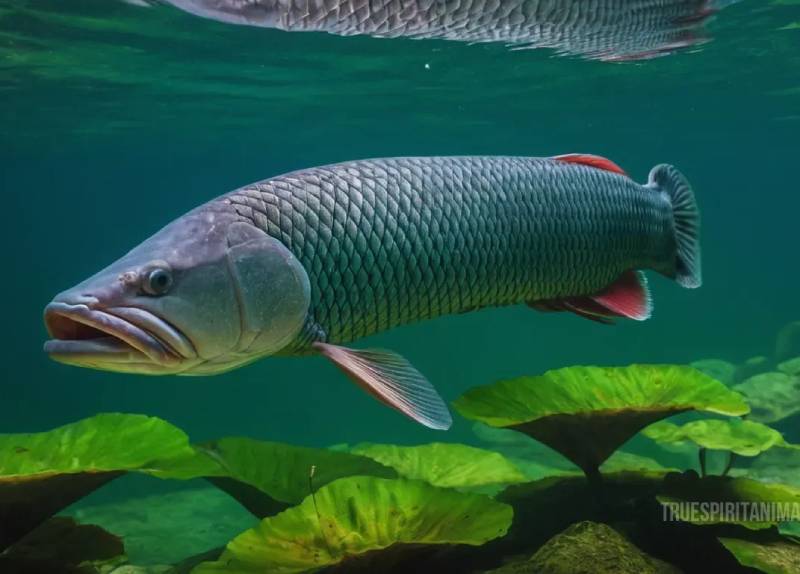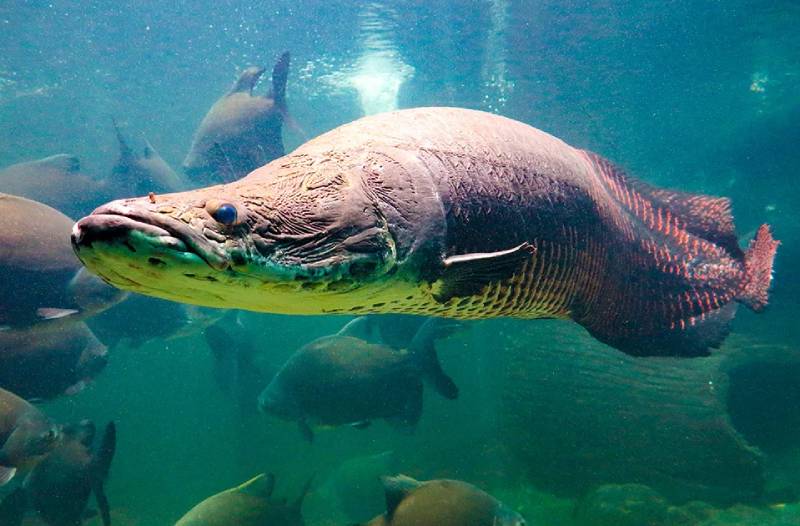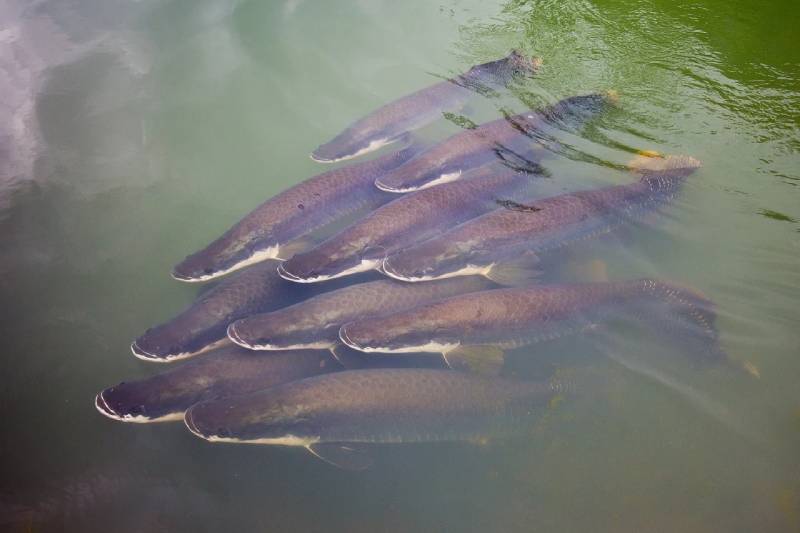Arapaima is a freshwater fish species, famous for its large size. Few people know that this is one of the largest freshwater fish species on the planet. In Vietnam, Arapaima is sought after by many people even though its price is not cheap. Let’s learn about Arapaima through the article below to know its origin and characteristics!
Introduction to Arapaima
Arapaima has the scientific name Arapaima gigas – a freshwater fish species that lives mainly in the Amazon River basin. This is a fish species on the list of the largest freshwater fish species in the world. They have a large appetite and grow quickly.
Because of its large size and impressive appearance, Arapaima is raised as an ornamental fish and is very popular in Vietnam. Many tycoons or people with economic conditions do not hesitate to spend a lot of money to own an Arapaima.

Origin of Arapaima
Arapaima lives mainly in the Amazon River basin in tropical South America and was first discovered in 1829 by a Swiss biologist named Louis Agassiz.
Today, Arapaima is raised all over the world. They are used both as food and as ornamental fish.
Arapaima characteristics
Each species of fish has different characteristics and the way to recognize an Arapaima is its large size. When fully grown, Arapaima is huge with a length of 2-5 meters and a width of 100-200kg. If kept as an ornamental fish, people will choose a smaller Arapaima with a maximum length of 1.5 meters and a weight of only 20-30kg.
At first glance, Arapaima is quite similar to ornamental Arowana, especially in the characteristics of a flat head, wide lips and small eyes. However, the difference in the arowana is that the body is much longer, the tail is short and flared, and there is a dorsal fin near the tail. The scales of this fish are also very large, hard, and the anus is located near the tail. The fish is black with a blue-green color, with a red dot on the tail.
>> Reference: What is a flounder? Characteristics of shape and price
Reproductive characteristics of arowana
Looking at the appearance, many people will think that the arowana will be quite aggressive. However, they have a rather gentle temperament and can live in harmony with many other fish species. The reproductive form of the arowana is also similar to that of the arowana. The arowana is an egg-laying fish, and reaches adulthood around 5 years old. At this time, the fish begin their reproductive cycle, lasting from late December to early May.
The female fish will lay eggs on the sand, then the male fish swims behind and pours sperm onto the eggs, soaking them in its mouth from January to the end of April. The period from May to August is when the baby fish hatch and both the male and female fish will take care of the baby arowana fish.

How to raise arowana fish?
Because it is an ornamental fish, popular today, many people are interested in the techniques of raising arowana fish. Like many other fish species, taking care of arowana fish also requires effort, time as well as experience and knowledge. It is necessary to pay attention to factors such as food and the ideal living environment of the fish.
Living environment for arowana fish
Because it is a large fish, arowana fish need a comfortable living space. The fish tank must have a minimum area of 4x4m. In addition, this fish is also very strong, so it is necessary to make a lid to limit the case of fish jumping out.
Regarding the water environment, the arowana fish has the characteristic of living in the middle and bottom layers, so it does not need too much oxygen. On average, after 15-20 minutes, the fish will come up to breathe. Therefore, it is necessary to avoid filling the tank with too much water. You should only change the water twice a week.
Food for arowana fish
Arowana fish are omnivorous, so their food is also very diverse. Some of the foods that this fish likes are animal meat, crustaceans, mollusks, and squid. Or, you can also feed the fish canned food to provide protein. On average, an adult arowana fish consumes 5kg of food.
For newborn arowana fish, with weak size and small intestines, you should only feed them plankton, larvae, or small dry food pellets.

How much does an arowana fish cost?
Because it is known as a fish for the rich, the price of the Arapaima is also a matter of great concern.
Few people know that the Arapaima is on the list of fish species that need to be preserved. Therefore, importing and breeding this fish species to Vietnam is quite rare. The number of Arapaima fish in Vietnam is not much, so the price of this fish species in our country is quite high.
To own an Arapaima fish, buyers need to spend from a few hundred to a few million VND. The price of the fish also depends on the size. Specifically:
Fish about 10cm long: From 2.2 million/fish
Fish about 20cm long: From 2.5 million VND/fish
Fish about 25cm long: From 2.7 million VND/fish
Fish 30 – 35cm long: From 3.2 million VND/fish
Fish 60 – 70cm long: From 9 – 12 million VND/fish
In addition, arowana fish are also bought by weight and the selling price is not cheap. The fish cost about 15-20 million/fish with a weight of 5-10kg. The selling price of arowana fish also depends on the place of sale, quantity and time of purchase.
In addition, the arowana fish is also bought by weight and the selling price is not cheap. The fish costs about 15-20 million/fish with a weight of 5-10kg. The selling price of the arowana fish also depends on the place of sale, quantity and time of purchase.
Because the selling price is relatively expensive, customers need to research and choose carefully when buying. In addition, when taking care of it, it is necessary to check the breed, health and grasp the techniques of raising fish, avoiding the situation of the fish being underdeveloped or even dying because it will be very wasteful.
Above is the basic information about the arowana fish that The World of Animals has shared. Hopefully, it has helped you understand more about this fish and have more useful knowledge to take care of them in the best way.
